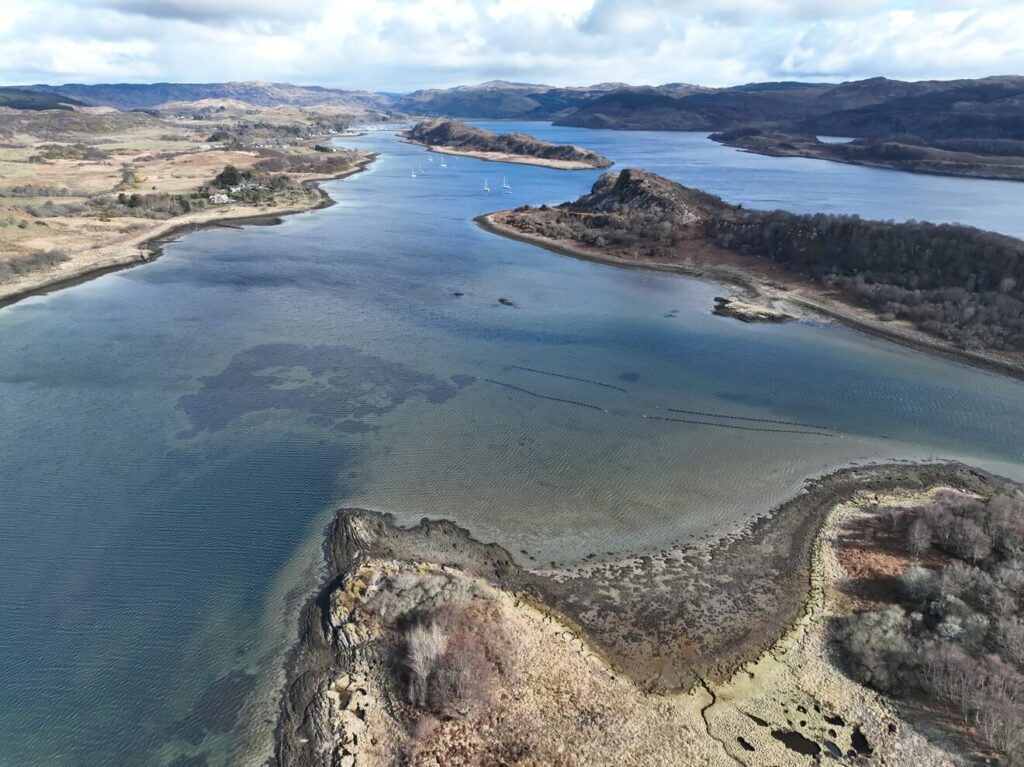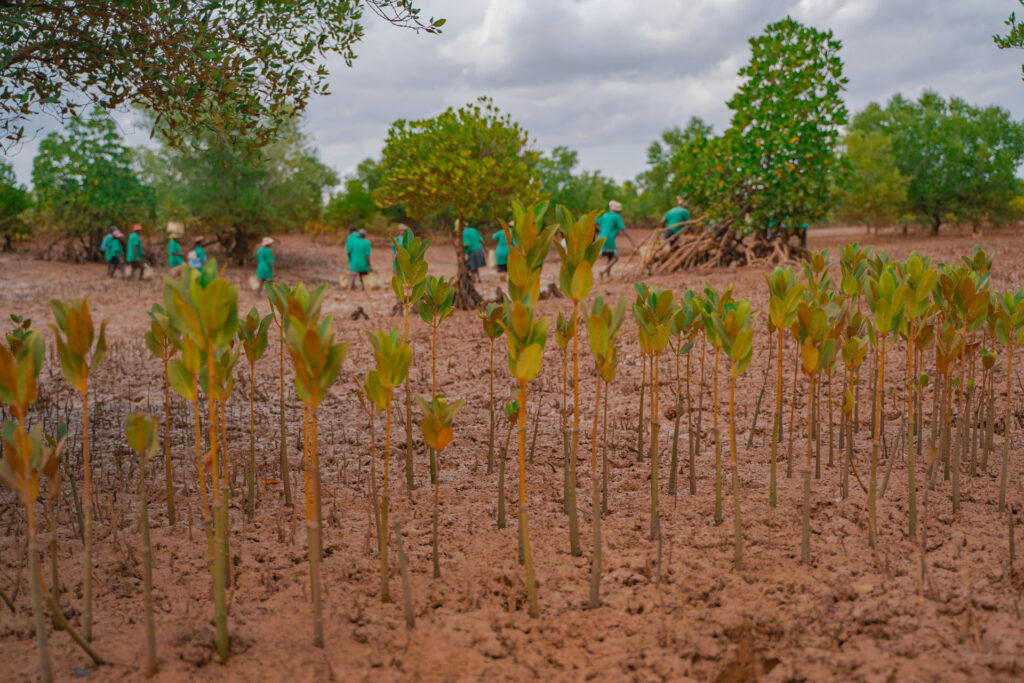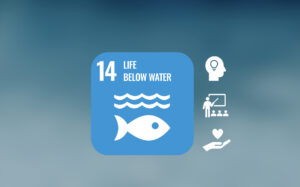Unlocking the mysteries of Blue Carbon Ecosystems
About how the ocean is impacting the carbon cycle
Written by Febe Thomas (Wave Maker at Go Ocean)
At Go Ocean we are super excited about diving into everything there is to know and learn about the ocean and its amazing ecosystems. Our passion is not just exploring the wonders of the ocean, but also sharing our discoveries with you. By sharing these, we hope you can get as excited as we are about the blue part of our planet and get involved with ocean protection and restoration. In this article, we take you with us to explore one of the ways the ocean is impacting the carbon cycle, namely through its blue carbon ecosystems.
Understanding Blue Carbon Ecosystems
As you might already know, marine ecosystems provide us with so called ecosystem services, like protecting coastal areas, serving as vital nurseries for marine life, and cleaning our waters. What you may not know, is that some marine ecosystems offer a natural solution for mitigating the impact of greenhouse gases on our atmosphere by sequestering and storing carbon dioxide. That’s why some marine ecosystems are often referred to as blue carbon ecosystems.
What is Blue Carbon?
In general, ‘Blue Carbon’ refers to carbon stored in coastal and marine ecosystems. ‘Blue’ refers to the marine realm and includes everything from the deep ocean to coastal lands and areas impacted by the saline waters, along with the soils and sediments beneath them. ‘Carbon’ refers to the carbon stored within the organisms inhabiting marine ecosystems, spanning from phytoplankton and seagrass to large creatures like whales. This includes carbon within living biomass as well as that from deceased organisms integrated into the seabed.
Within blue carbon, the focus mainly lies on carbon in coastal ecosystems. These ecosystems include mangroves, salt marshes, and seagrass and have been recognized by the IPCC as established blue carbon ecosystems. Besides that, they are also eligible for blue carbon crediting instruments.

Seagrass Meadow Restoration – Scotland, United Kingdom – Seawilding
What sets Blue Carbon ecosystems apart?
Over the years, the historical focus on forest ecosystems has resulted in scarce data on blue carbon. However, researchers widely agree that blue carbon ecosystems, like mangroves, salt marshes, and seagrass, both sequester and store carbon at considerably higher rates in comparison to green carbon ecosystems. Research thereby indicates that these blue carbon ecosystems are up to ten times more efficient at sequestering carbon dioxide on an annual per area basis, compared to boreal, temperate, or tropical forests.
Moreover, they are approximately twice as effective at accumulating carbon. This is because a significant proportion of the carbon stock in blue carbon ecosystems is stored in soils characterized by water saturation and oxygen deprivation, allowing it to stay there for centuries or even millennia. Mangroves, seagrass, and salt marshes are thus acting as so-called carbon sinks. This is different with terrestrial forests, where most carbon is stored in above-ground plant materials.
However, when these coastal ecosystems are disturbed, by for example converting the land for other land uses, they can quickly become a source of carbon. Enormous amounts of carbon are emitted back into the atmosphere once blue carbon soils get exposed to oxygen, exacerbating climate change.
Exploring three main Blue Carbon Ecosystems
As already mentioned, the main focus regarding blue carbon ecosystems lies on seagrass, mangroves and salt marshes. Go Ocean’s portfolio already includes two of these prominent blue carbon ecosystems: seagrass and mangroves. To acquire a deeper understanding, we have examined each of these ecosystems, and had a look at how the sequestration and storage process of blue carbon takes place.
The process of capturing carbon dioxide from the atmosphere, measured as a rate of carbon uptake per year.
The long-term confinement of carbon in plant materials or sediment, measured as a total weight of carbon stored.
Seagrass
Seagrass distinguishes itself as an aquatic flowering plant and demonstrates an extraordinarily high level of productivity. Although covering just 0.1% of the seabed across the world, seagrass accounts for up to 18% of carbon storage in the ocean. The key lies in the plant’s structure and its interaction with the environment. Like land plants, seagrass fixes carbon through photosynthesis, converting carbon dioxide into biomass. Pieces of the plant may break off, including leaves, and so the leaves itself may get incorporated into the sediments. Seagrass can trap carbon from various sources, including any types of organic matter that becomes enclosed. Because of its capacity to create a protective cover over trapped organic matter, carbon essentially becomes locked away underneath the seagrass bed itself and can stay there for a very long time.
Besides its long-term storing capacity, seagrass is also quite quick at carbon sequestration. Although terrestrial forests may ultimately accumulate more carbon over time, simultaneously restoring both a forest and a seagrass bed will result in significantly more carbon being sequestered in a shorter period with the seagrass.
Important to note is that seagrass meadows remain predominantly un-surveyed. Around the globe, researchers are working on collecting data towards this, but as it is a complex process, it may take some time.
Data source: Seawilding
Mangroves
A similar carbon sequestration and storing process goes for mangroves and salt marshes. Mangroves are frequently found at the interface of land and sea and are resilient trees that flourish in coastal areas across tropical and subtropical regions.
On average, (our) mangroves in Madagascar have a sequester capacity of 637,29 kg CO2 per tree over a period of 20 years, of which 128,13 kg CO2 is sequestered during the first 8 years. In comparison, agroforestry trees in Madagascar, like acacia mangium and eucalyptus citriodora, have an average sequestration capacity of 833,46 kg CO2 per tree over a period of 20 years, but only sequester 35,03 kg CO2 in the first 8 years. Thus, mangroves are sequestering way more carbon in a shorter time span compared to terrestrial forest, making them fundamental in mitigating climate change.
Data source: Bôndy

Mangrove Restoration – Majunga, Madagascar – Bôndy
Salt marshes
Salt marshes are coastal wetlands that are flooded and drained by salt water brought in by the tides. Similar to seagrasses, salt marshes have major data gaps. Nevertheless, researchers again widely agree on their considerably high sequestration and carbon storage rates.
Concluding our discoveries on Blue Carbon
The unique combination of speed and long-term storage sets blue carbon ecosystems apart, positioning them as important systems to mitigate the climate change that we see at the moment. As blue carbon ecosystems are getting more and more attention, we are hopeful towards researchers around the globe to close the data gap on seagrass and salt marshes. In this way, we can see how we can maximize factors to improve CO2 sequestration and storage & provide the evidence to those people who manage the coast.
Of course, what we have to do in the meantime is protecting the blue carbon ecosystems that we have and restore the areas where especially the coasted vegetated habitats, like mangroves, salt marshes and seagrass, have been lost.
Found this article interesting? Spread the word.

Revitalizing Our Oceans: The Critical Role of Businesses and SDG 14
This article explores why businesses should become stewards of the ocean, embracing sustainable practices and restoration initiatives to ensure a thriving marine environment for future generations.

Unlocking the mysteries of Blue Carbon Ecosystems
In this article, we take you with us to explore one of the ways the ocean is impacting the carbon cycle, namely through its blue carbon ecosystems.






